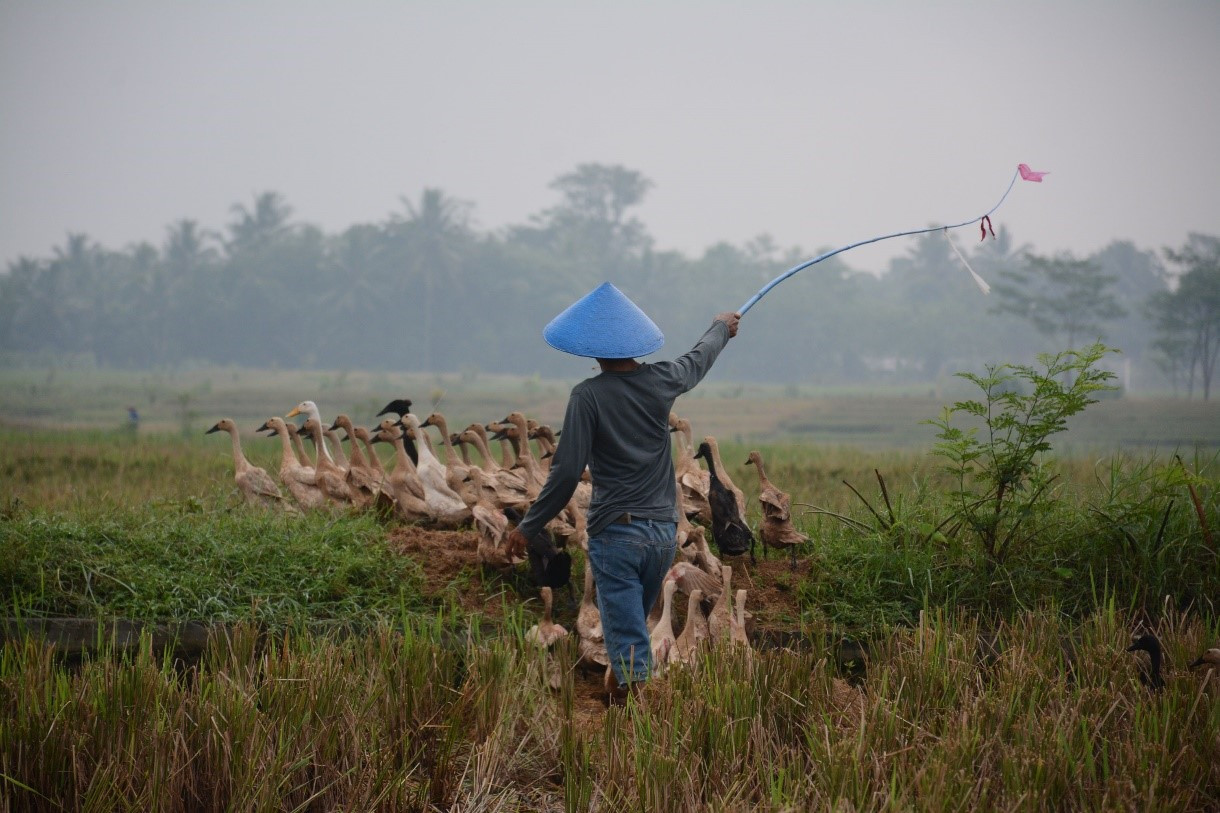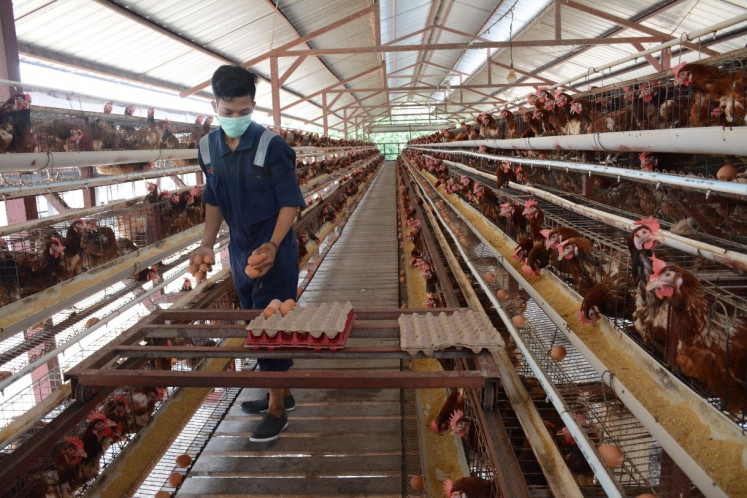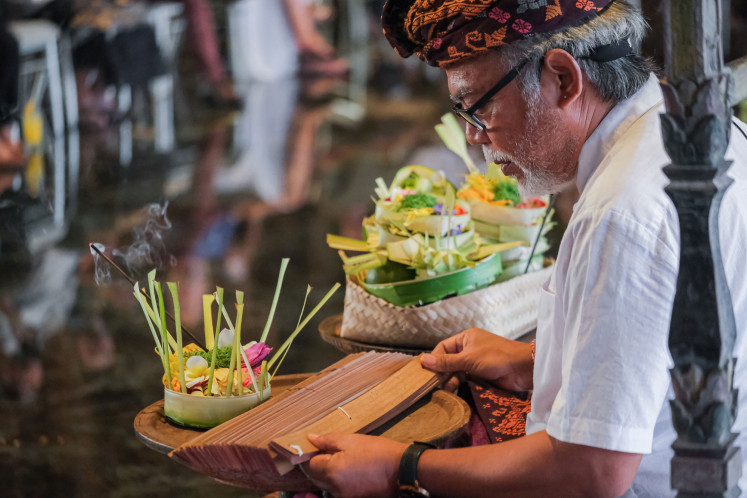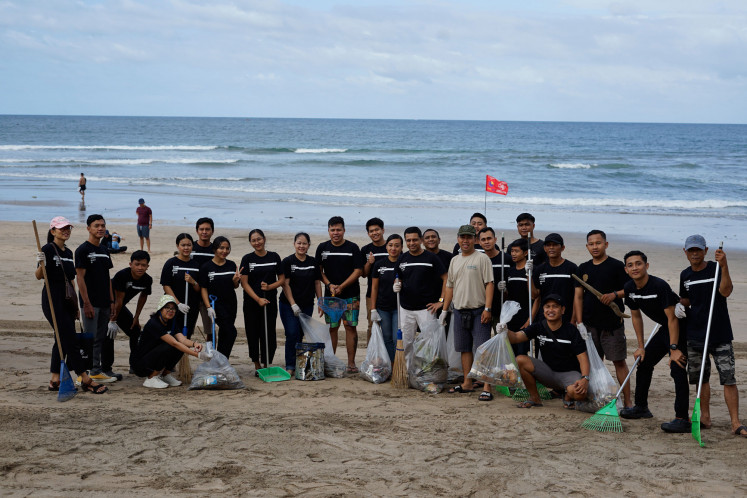Youth, experts tackle food security, zoonotic diseases with One Health approach at core
One Health is a unified approach that aims to optimize the health of people, animals and their shared environment.
Change Size
 (Photo credits: FAO/Sadewa)
(Photo credits: FAO/Sadewa)
O
ne Health is a unified approach that aims to optimize the health of people, animals and their shared environment. It recognizes the interdependence between the health of humans, domestic and wild animals, plants and the environment, including ecosystems. It is an approach that demands action from multiple communities from different sectors, disciplines and levels of society. Despite being a long-established concept, One Health is now moving into the forefront as a feasible approach to maintaining sustainable development, including the need for clean water, air and energy, addressing global climate change and nutritious food for everyone.
Nov. 3 of this year marked the sixth anniversary of the global One Health campaign. To celebrate, National Geographic Indonesia hosted a webinar titled “Ancaman Pagebluk terhadap Ketahanan Pangan Kita” (The Threat of a New Outbreak to Our Food Security) on Nov. 27. It was a joint effort between National Geographic Indonesia and the Food and Agriculture Organization of the United Nations (FAO), supported by the Agriculture Ministry and the United States Agency for International Development (USAID).
Moderator Mahandis Yoanata Thamrin, Managing Editor of National Geographic Indonesia, invited the audience to reflect on the fractured relationship between humans and the rest of the ecosystem. He mentioned how climate change, among other factors, had given rise to zoonotic emerging infectious diseases (EID) that spread among humans, animals and livestock.
“The increase in EIDs is severely affecting biodiverse countries with unsolved environmental and socio-economic issues,” Yoanata began. “We know that mutating viruses have threatened our food security. In actuality, just how vulnerable is Indonesia against emerging infectious diseases?”
Professor Amin Soebandrio of the Eijkman Institute for Molecular Biology came on screen to show how the evolution of human activity contributed to the emergence of new human-to-human and animal-to-human diseases. Human migration and globalization, Soebandrio observed, contributed to the spread of pathogens across countries and continents. They also helped drive the growth of the human population, increasing humans’ need for food. The intensification of protein, carbohydrate and even feed production for livestock prompted people to expand into new geographic areas.

The pursuit of housing and nourishment led to unwelcome consequences, as reflected in the 2004-2005 avian influenza outbreak in poultry farms. Soebandrio also mentioned an opening of a new housing project on deforested land that resulted in a surge of malaria cases in the area. In the context of the COVID-19, Soebandrio emphasized how increased close contact between humans and wild animals — possible sources of SARS-CoV-2, the virus that causes COVID-19 — caused nonmalignant pathogens in their natural habitat to become deadly human viruses. Other factors have also heightened the risk of infection among zoonotic diseases, including humans’ lifestyles and their environment.
Sheherazade, better known as Shera, is a scientist and a cofounder of the Tambora Muda, a national network of young Indonesian conservationists. “How does protecting nature also protect us?” Shera asked at the beginning of her presentation. “We need to stress the importance of involving forestry, wildlife conservation and veterinary sectors into EID treatment and prevention.” Reiterating Soebandrio’s points, Shera added that land-use change (including deforestation and urbanization) and the commercial exploitation of wildlife also helped exacerbate the spread of zoonotic EIDs.
Deforestation, Shera warned, was one of the root causes of the Nipah virus outbreak, while the civet trade gave rise to SARS cases in the early 2000s. “When we talk about post-pandemic recovery, what we need to focus on is maintaining the habitat of wildlife by reducing deforestation and unsustainable land use change,” She summarized. “Cutting down wildlife exploitation also means stopping the trade and transport of highly zoonotic animals.”
Through Tambora Muda, Shera and her team aim to translate their research into initiatives and push policymakers to take decisive action on the urging of millennials and Generation Z. “When we want to enforce One Health, we need to involve youths not as targets but as subjects that also formulate and implement a program,” She stressed. As an example, she presented a bat conservation project in Mantawalu Daka, Central Sulawesi. There, her associates were at the forefront of monitoring and restoring the local bat population to protect them from bushmeat trade,” Shera explained. “At first, they did not really pay the zoonotic aspect any mind, only the preservation of the ecosystem and the bats themselves.”
Eradicating the bushmeat trade is also part of the Agriculture Ministry’s battle against zoonotic diseases. Nuryani “Nunung” Zainuddin, the ministry’s Director of Animal Health, presented her directorate’s efforts to detect, respond to and protect livestock health across the nation. The Directorate of Animal Health’s role is not limited to livestock; it also includes their human caretakers and consumers and, ultimately, the whole human population, albeit indirectly. And by preventing EIDs in livestock, the directorate fortified food security, which is part of the One Health framework, alongside human activity and economic development.

To date, the Directorate of Animal Health has a comprehensive system for controling and containing zoonotic diseases, including a network of veterinary laboratories across the country and an online database for disease reporting. “The responsibility not only lies with the central government but also with regional administrations and every stakeholder there is. And together with the Health Ministry and the Environment and Forestry Ministry, we prioritize addressing six major zoonotic diseases, including those caused by the coronavirus. Every measure is, of course, designed with One Health in mind.” Nunung explained. “Our surveillance program, for example, focuses on diseases in both animals and humans.”
Research centers, conservation organizations and ministries are not the only ones joining the fight against zoonotic EIDs. Journalists, too, play a tremendous role in shaping narratives that inspire audiences from every demographic to become part of the One Health movement. Didi Kaspi Kasim, Editor in Chief of National Geographic Indonesia, has spent his career creating stories for an increasingly critical audience. His fundamental objective, however, is to drive people to explore current issues with renewed optimism and eventually make an impact.
“The press needs to step in and be the catalyst to amplify movements out there making impactful contributions,” he said.
But the main point, Didi continued, was not retelling success stories. Even stories of failure could inspire people to carry on the movement and influence others to do the same. Fresh perspectives combined with engaging storytelling should prompt readers to ask more questions, especially about earth and how to protect it.









